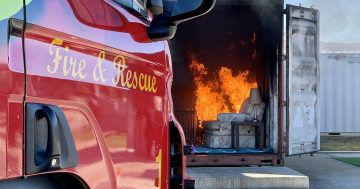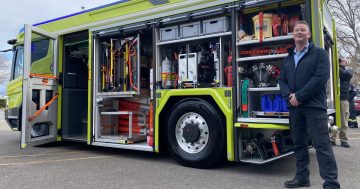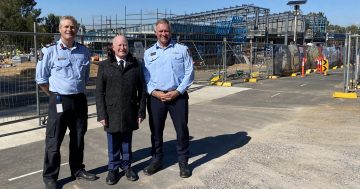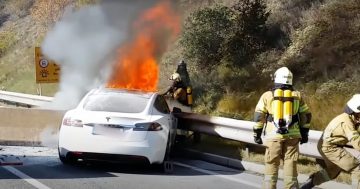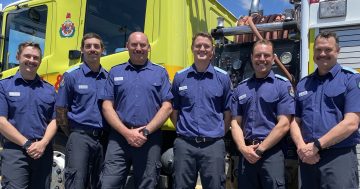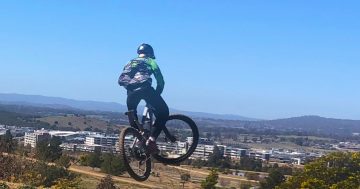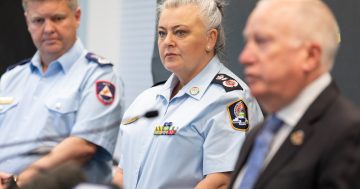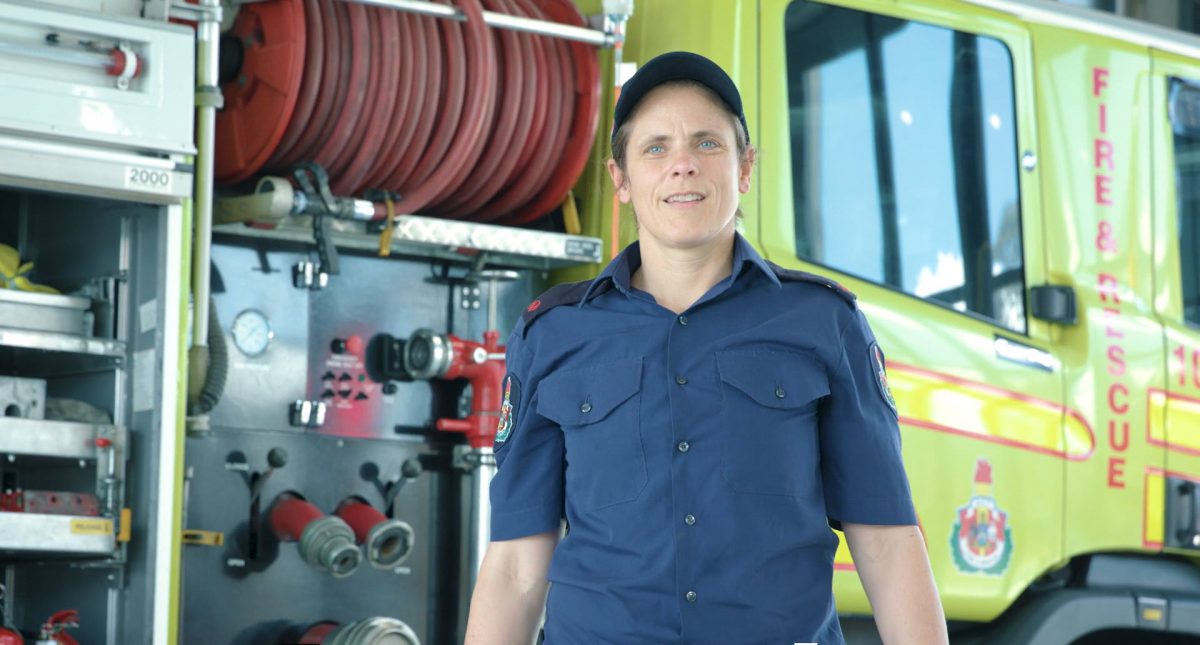
Dagmar Schade. Photo: ACT Emergency Services Agency.
Dagmar Schade first arrived in Australia as a backpacker.
“I enjoyed it so much, I kept coming back.”
Dagmar had been making furniture and kitchens as a cabinetmaker’s apprentice in Germany. She took a similar job in New Zealand before becoming an outdoor instructor with Outward Bound in Tharwa in 2010.
She’s now a firefighter with ACT Fire & Rescue (ACTF&R) and can be found behind the wheel of a truck, weaving through traffic with lights and sirens blaring.
“It’s always a bit scary entering a new situation, and certainly in the fire brigade, you regularly have challenges along the way and you won’t always be able to foresee them,” she said.
Applications are now open for the “next generation” of the ACT’s knights in high-vis armour.
Minister for Police and Emergency Services Mick Gentleman said that under the enterprise agreement, the ACT Government has committed to 99 new firefighters over the next few years.
“Along with the 16 recruits who graduated into Emergency Services ACT this year, this round of recruitment is a significant step forward in delivering on that commitment,” he said.
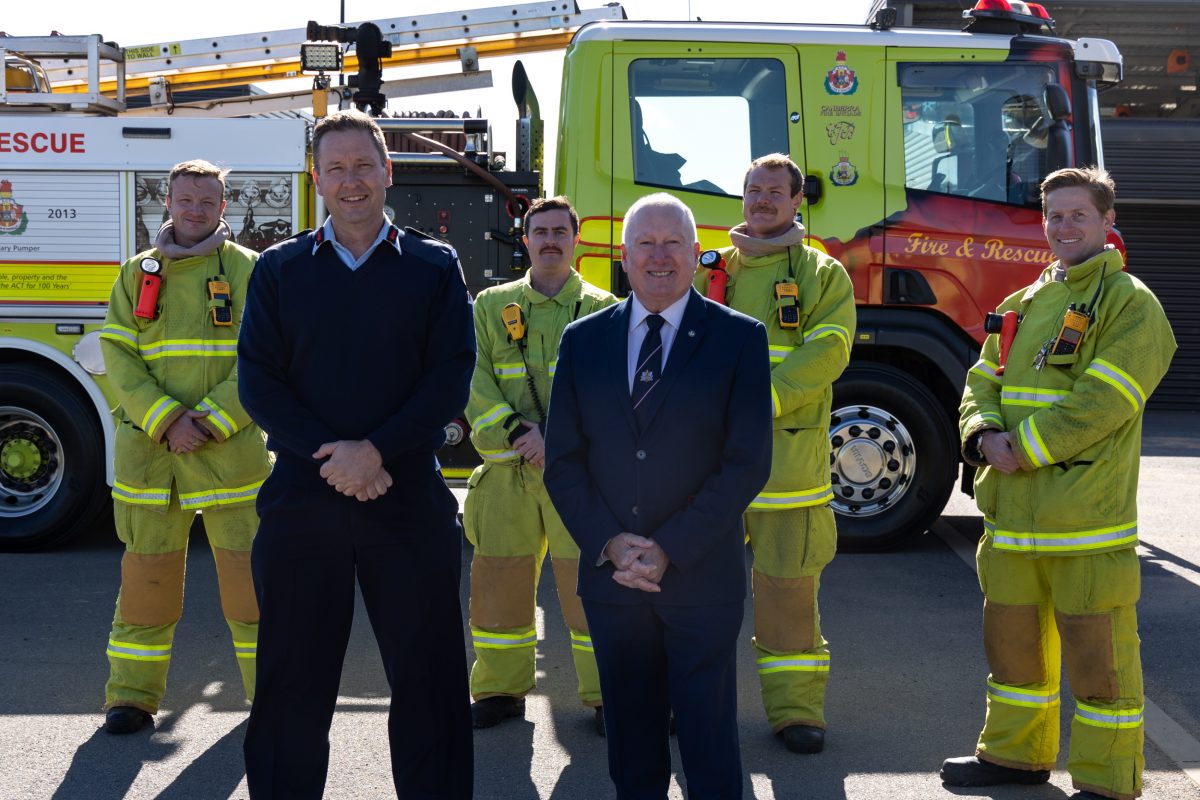
Emergency Services Minister Mick Gentleman and ACT Fire & Rescue are calling for more recruits. Photo: Supplied.
“Our fire service is growing rapidly … and this brings more on the ground and replaces those retiring.”
The local fire brigade dates back to 1913 when it was administered from Melbourne and led by Percy Douglas who, after a year of supervising the volunteer firefighters, was appointed as the first Chief Officer in 1914.
Mr Douglas was allocated the phone number “Canberra 1” for the Brigade headquarters near Acton Guest House on the Molonglo River.
Back then, the brigade consisted of only two volunteers, the officer, Mr Douglas, and a horse-drawn cart.
Responsibility moved to NSW in 1958, but as Canberra continued to grow, it became clear the Territory could run its own brigade. Legislation was ratified in 1976 and the ACT Fire Brigade was born. It was renamed ACT Fire & Rescue in 2011.
Today, ACTF&R has nine stations throughout the ACT, with more than 330 staff and 34 vehicles in its fleet.
Nowadays, the work isn’t limited to fire either.
“It’s a real variety of incidents too, including fire and rescue, medical services [and supporting] police in their day-to-day operations,” Mr Gentleman said.
“We’re hoping to get as many as we can, and we’re asking people to be prepared for some of the physical training.”
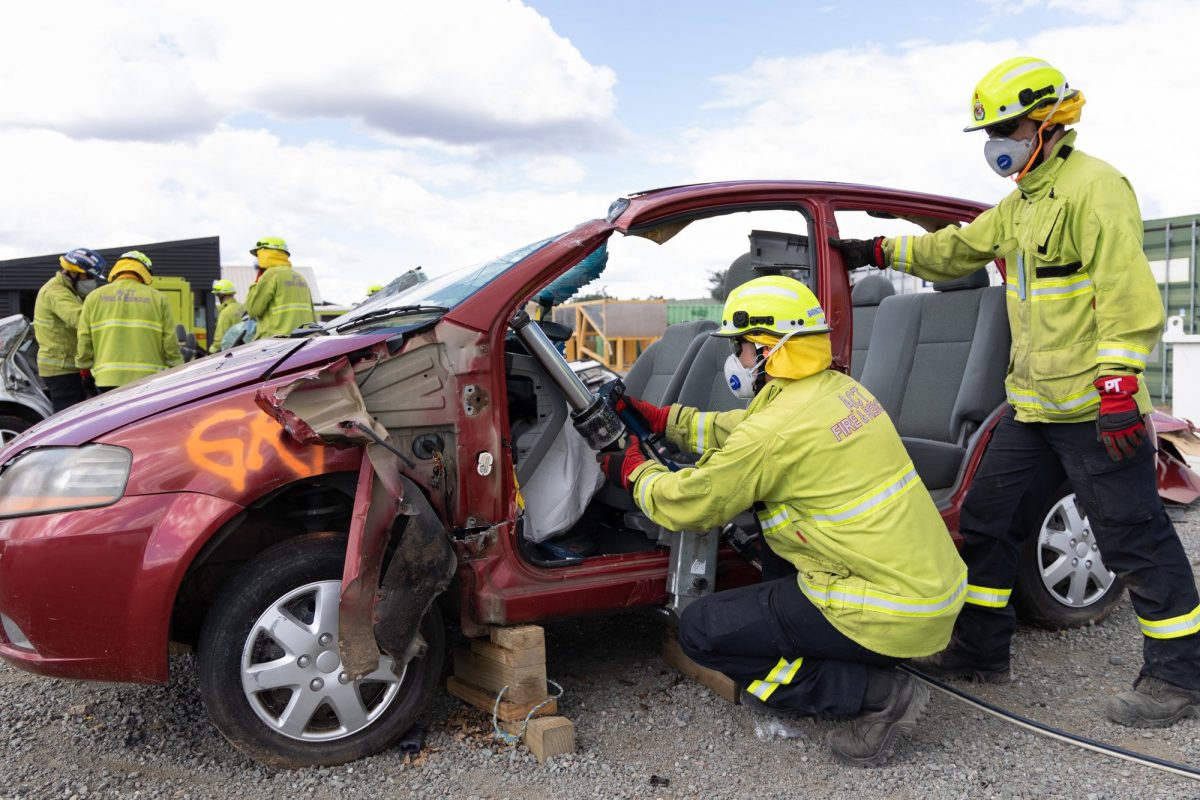
Firefighters are trained to perform a road crash rescue. Photo: ACT Fire & Rescue, Facebook.
Bruce Chancellor has lived in Canberra since he was 15 and ran his own business before starting with ACTF&R as an on-the-ground firefighter 12 years ago. He is now station manager at the Emergency Services Agency’s new training centre in Hume.
“I didn’t ever imagine myself as a firefighter,” he said.
“For me, it was about looking for a challenge and a new career path. The other good part of the job is the lifestyle. In my leisure time, I go paddling, walking and other general fitness-type activities.”
Bruce said it’s an always exciting time when new faces enter the brigade, and he gets to see almost all of them.
“Hume is home to our training facility, where we can practice everything from fire simulation through to a road crash rescue. I coordinate the training courses for this.”
A training period of 90 days covers a mix of theory and practice. Recruits learn about fire behaviour and safety and fire fighting techniques, as well as rescue techniques and hazardous materials handling.
Having a Medium Rigid Drivers Licence is a crucial part of the qualification and must be gained early on. Upon graduation, recruits immediately join an operational crew for an on-shift training program to ensure their techniques are spot on.
Acting Chief Officer Glen Brewer said they “accept people from all walks of life”.
“We have around 24 females in our service at the moment, which has been such a great increase since 2015 when we had about six,” he said.
“We’re looking for intelligent, fit and resilient people and make sure they have the physical and mental aptitude to do some of the roles we do.”
For more information on Fire and Rescue recruitment and how to apply, visit the ACTF&R website. Applications close on 31 July 2022.













